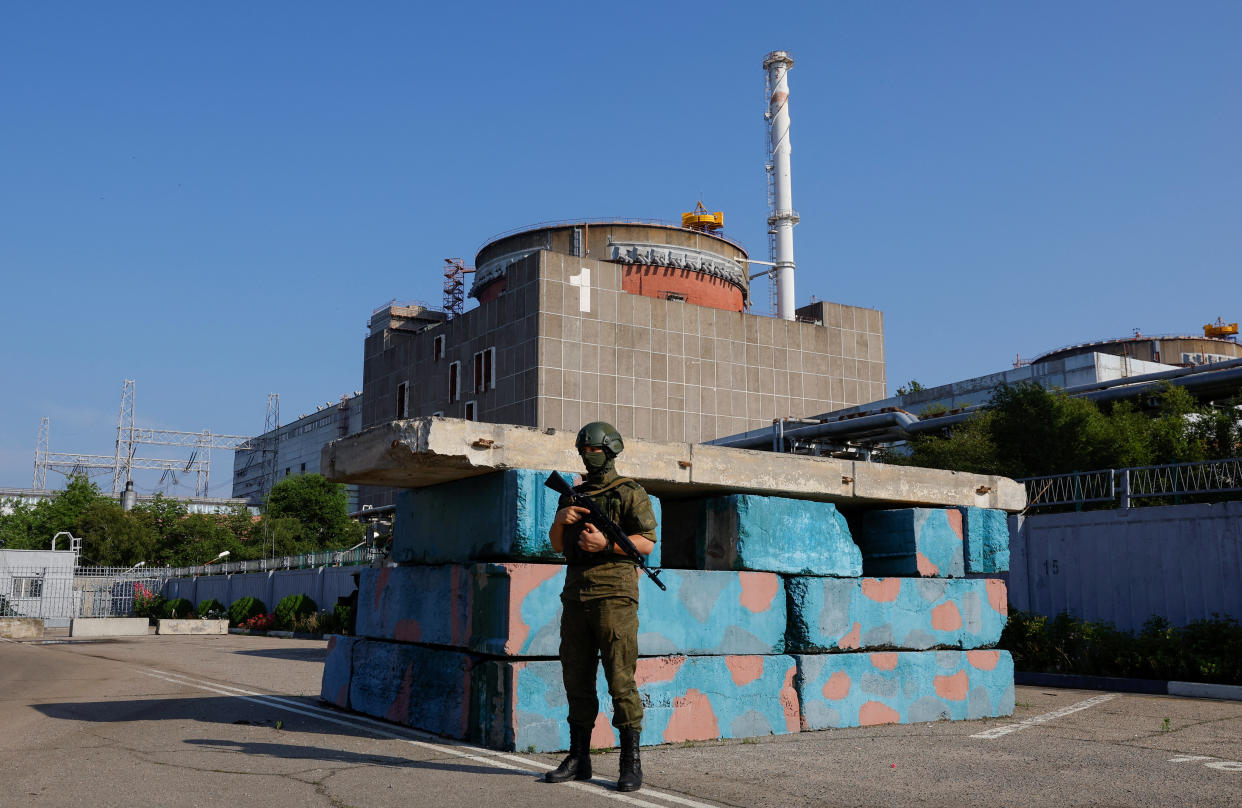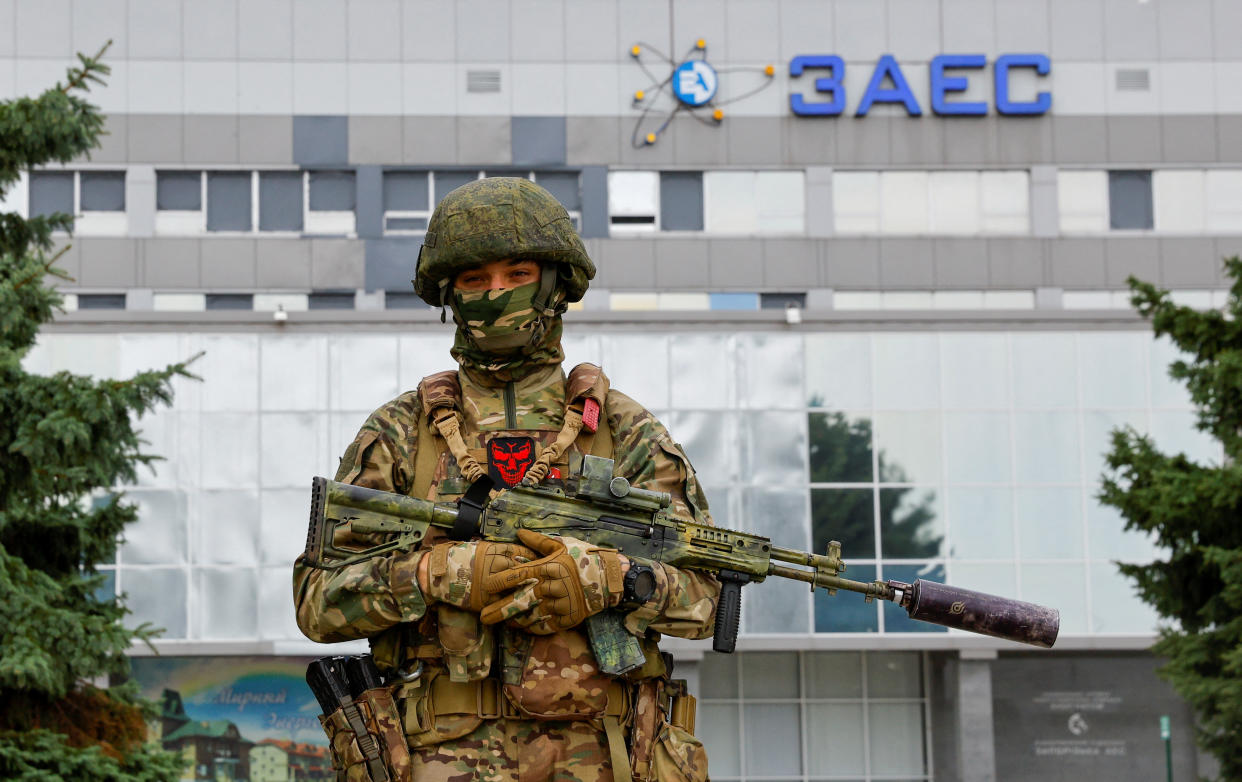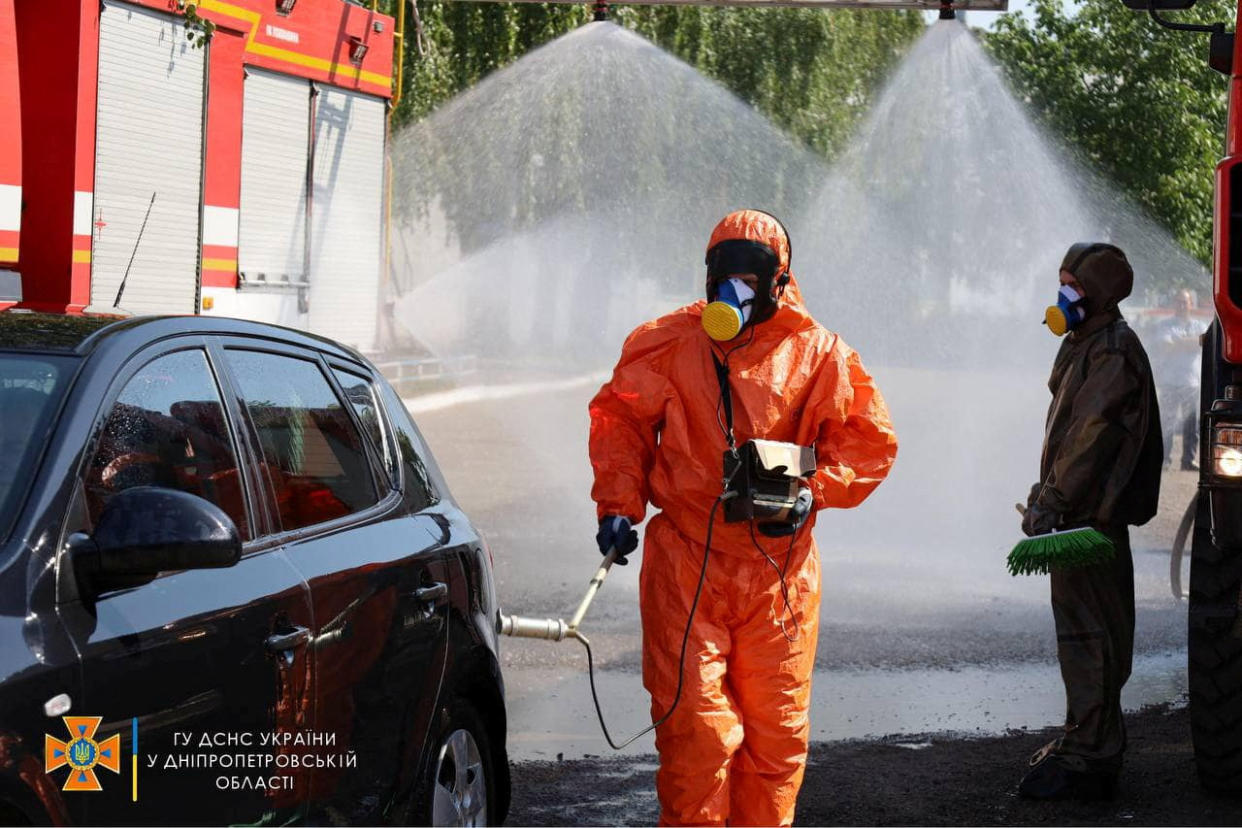Zaporizhzhia: The Ukraine conflict hotbed posing a very real risk of nuclear disaster

At least three people have been killed and nine others wounded in a Russian missile attack on a Ukrainian city close to Europe's largest nuclear power plant and a major point of tension in the Ukraine conflict.
A 43-year-old man and young women aged 19 and 21 lost their lives in the strike on Zaporizhzhia late on Wednesday, while an 11-month-old baby was among the wounded.
Ever since Vladimir Putin's invasion in February 2022, the Zaporizhzhia nuclear power plant has been a major point of concern, with memories of the 1986 Chernobyl disaster still relatively fresh in many people's minds.
International community members keen to avoid a repeat of that nuclear catastrophe were alarmed when Russian troops stormed the facility in March last year and kept employees hostage.
Read more: Russia trying to 'scare' its citizens into avoiding international coverage of Ukraine war, says UK
Nearly a year-and-a-half later, little has been done to alleviate people's concerns, with Ukrainian authorities raising fears of intentional sabotage causing radioactive disaster.
Here, Yahoo News provides a timeline of what has happened at the plant throughout the war and how the international community has responded.
Russian troops storm Zaporizhzhia nuclear power plant
Putin's forces managed to take over the power plant on 3 March, 2022, with state energy company Energoatom shutting down two reactor units down beforehand to limit the risk of a disaster.
However, others were kept in operation, and an ensuing battle in the surrounding area between Russian and Ukrainian forces raised concerns of something going terribly wrong.
A fire broke out at the plant on 4 March, with Ukraine's presidential adviser Mykhailo Podolyak tweeting: "Zaporizhzhia NPP is under fire! The entire[ty of] Europe is at risk of a repeat of the nuclear catastrophe. Russians must stop fire!"
Read more: Russia 'improves position', West lining Putin's coffers, German army staff 'spying'

World leaders expressed grave concerns over the development, and in a statement the World Nuclear Association called for "the cessation of all violence at all nuclear facilities, and for the plant workers and emergency response crews to be allowed to fulfil their duties".
"In addition, we urgently call for the creation of safe zones surrounding all nuclear power plants in Ukraine to ensure the safety of all nuclear facilities and their staff," it added.
Staff held prisoner
Faced with international outrage, the Kremlin remained largely silent, and reports began to emerge of employees being taken hostage and tortured.
The International Atomic Energy Agency (IAEA) accused Russian troops of interfering with operations at the plant as staff were forced to work under stressful conditions.
Read more: Ukraine says it has busted an all-female spy ring
The agency added that "any action of plant management – including measures related to the technical operation of the six reactor units – requires prior approval by the Russian commander".
It said: "Russian forces at the site have switched off some mobile networks and the internet so that reliable information from the site cannot be obtained through the normal channels of communication."
Why is Russia doing this?
Since taking over the site, Russia has been using it as a facility to store weapons and ammunition – the idea being that Ukraine wouldn't dare to attack it and risk a nuclear disaster.
This has done little to alleviate concerns however, amid fears that the Kremlin can use the facility for "nuclear blackmail" against Kyiv, and shelling continued in the area from both sides.
In October, Putin ordered his government to officially take over the plant, having officially declared the annexation of the Zaporizhzhia region.

Although Russia has pressured some workers to sign contracts with Russian state energy company Rosatom, the power plant is still run by Energoatom, according to the Arms Control Association.
Energoatom said Moscow's ultimate plan was to connect the plant to the Russian power grid, but in the meantime the facility had been left in a precarious position.
It was operating on backup diesel generators having been disconnected from the Ukrainian grid due to Russian shelling, the company said.
Although the six reactors are shut down, they still need a constant supply of electricity to keep the nuclear fuel inside cool and prevent disaster.
Fears of intentional sabotage
Towards the end of June this year, Ukrainian president Volodymyr Zelenskyy claimed that Russia had rigged the occupied power plant with explosives and was ready to set off the charges.
Zelenskyy suggested this may be an attempt to simulate an attack to blame on Kyiv.
Read more: Founder of Russia’s Google attacks Kremlin’s ‘barbaric’ war on Ukraine
He added: "Russia uses the Zaporizhzhia nuclear power plant as an element in its aggression.
"It occupies the plant. It uses it to cover the shelling of neighbouring cities. It keeps weapons and troops there."
The following day, Ukrainian military intelligence chief Kyrylo Budanov told The New Statesman that the plan for deliberate sabotage had already been "drafted and approved" and simply needed a nod to go ahead.
However, Renat Karchaa, an adviser to the head of Rosenergoatom, which operates Russia's nuclear network, has accused Ukraine of plotting an act of sabotage.
"The only source of danger to the Zaporizhzhia nuclear powerplant is Russia".
Ukrainian President Volodymyr Zelenskyy says the Russians have placed what looks like explosives on the roof of the Zaporizhzhia nuclear plant.https://t.co/PcJtjjYwAs
📺 Sky 501 and YouTube pic.twitter.com/xf8M8eMYgD— Sky News (@SkyNews) July 5, 2023
Without providing evidence, he said Kyiv planned to drop ammunition laced with nuclear waste on the facility.
Fears were already present after Russia ordered an evacuation of the surrounding area in May in anticipation of intense fighting.
Read more: Russian military bloggers silent on Ukrainian bridge attacks
The Russia-backed governor of Zaporizhzhia province, said he ordered the evacuations in response to intensified Ukrainian shelling, which appeared to be part of a counteroffensive to re-take the plant.
Petro Kotin, head of Energoatom, said on 9 May that the evacuations risk creating a “catastrophic lack” of personnel, warning that it would be "dangerous for the plant".


